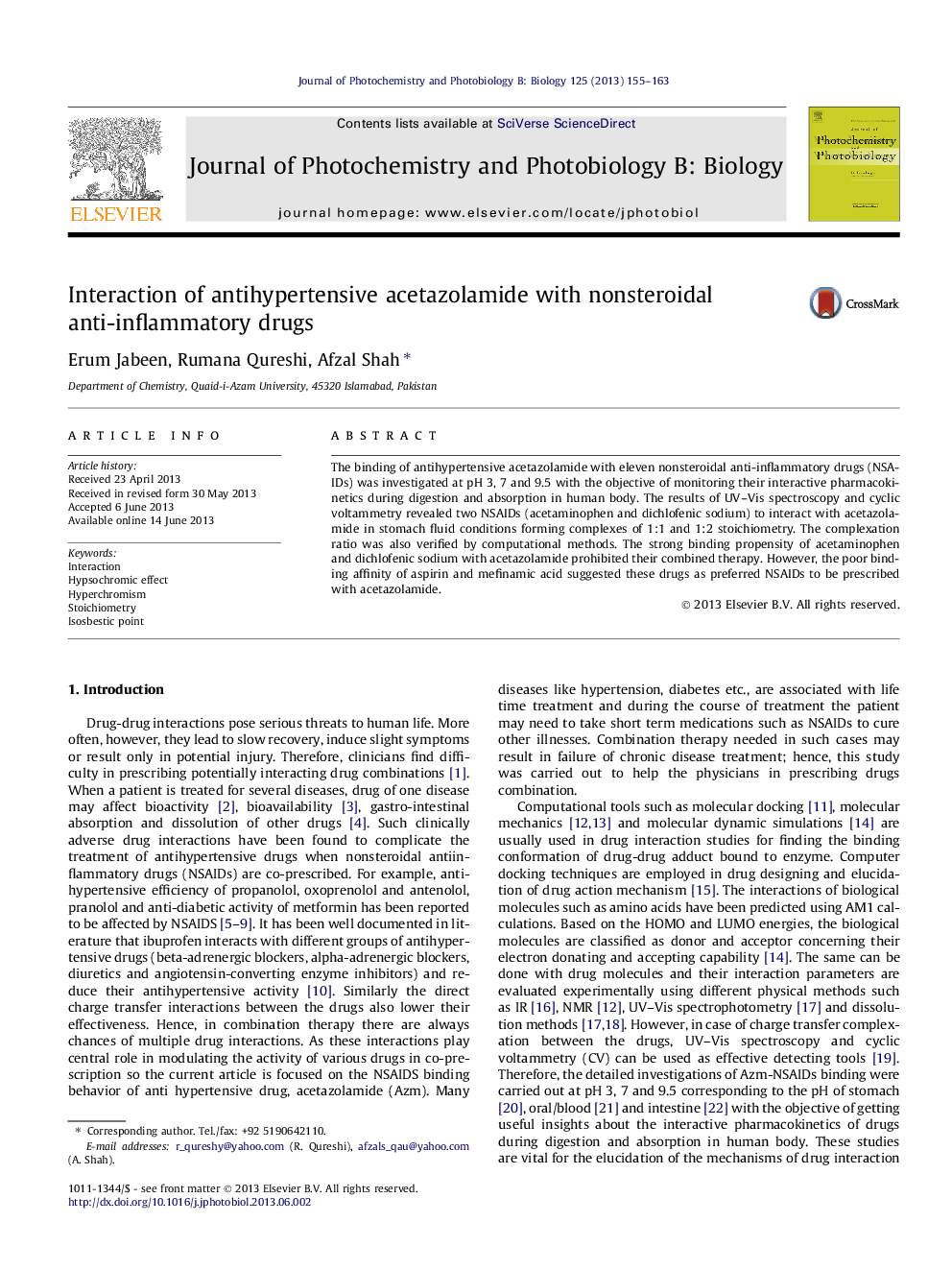| Article ID | Journal | Published Year | Pages | File Type |
|---|---|---|---|---|
| 30544 | Journal of Photochemistry and Photobiology B: Biology | 2013 | 9 Pages |
•The interaction of acetazolamide with eleven NSAIDs was investigated.•The work was done at pH 3, 7 and 9.5.•The binding parameters were predicted by computational methods.•The theoretical results were verified by UV–Vis spectroscopy and cyclic voltammetry.•Acetaminophen and dichlofenic formed adducts of 1:2 and 2:1 stoichiometry.
The binding of antihypertensive acetazolamide with eleven nonsteroidal anti-inflammatory drugs (NSAIDs) was investigated at pH 3, 7 and 9.5 with the objective of monitoring their interactive pharmacokinetics during digestion and absorption in human body. The results of UV–Vis spectroscopy and cyclic voltammetry revealed two NSAIDs (acetaminophen and dichlofenic sodium) to interact with acetazolamide in stomach fluid conditions forming complexes of 1:1 and 1:2 stoichiometry. The complexation ratio was also verified by computational methods. The strong binding propensity of acetaminophen and dichlofenic sodium with acetazolamide prohibited their combined therapy. However, the poor binding affinity of aspirin and mefinamic acid suggested these drugs as preferred NSAIDs to be prescribed with acetazolamide.
Graphical abstractThe results of UV–Vis spectroscopy revealed that (A) acetaminophen and (B) dichlofenic sodium interact with acetazolamide forming complexes of 1:1 and 2:1 stoichiometry.Figure optionsDownload full-size imageDownload as PowerPoint slide
